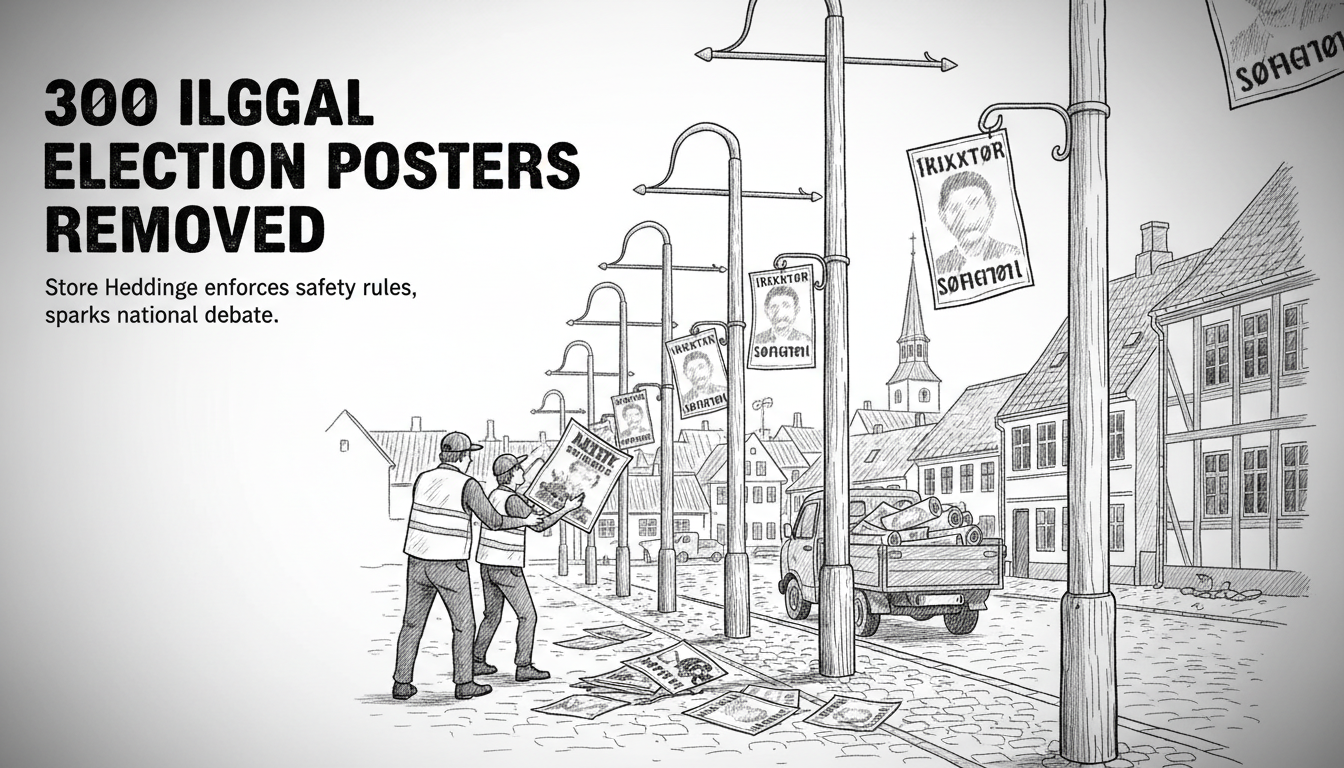Approximately 300 illegally placed election posters have been removed in Store Heddinge, Denmark. Municipal workers took down the campaign materials after discovering they violated safety regulations.
The cleanup operation began after a citizen complaint about improperly placed posters. Officials determined the posters were hung too close to roadways.
Henrik Hedegård, head of the municipal roads department, explained the violation. Posters must be 50 centimeters from the road edge, but in several central streets, light poles stand only 30 centimeters from the curb.
"We asked political parties to remove the posters themselves on Thursday," Hedegård said. "Most complied over the weekend. We removed the final 10-15 posters Monday morning."
Store Heddinge features narrow, cobblestone streets with slender steel light poles positioned near the road. The historic market town's charming center includes roadside trees and granite artwork.
Former mayor Mogens Haugaard Nielsen called the situation unusual during an election campaign. "Everything is gone from the entire town center," he said. "I wish they had found a solution that considered democratic participation."
Nielsen suggested temporary exemptions could have been granted for the three-week campaign period. He noted no accidents had occurred due to the posters.
"This affects all political parties, not just Moderates," Nielsen emphasized. "If this sets precedent nationwide for all poles 30 centimeters from the road, there's massive work ahead."
Municipal researcher Roger Buch called the removal operation extraordinary. "It's unusual to remove so many election posters at once," he said. "Many municipalities typically overlook minor violations."
Buch noted illegally placed posters are widespread across Denmark, often hung too low relative to cyclists and pedestrians. National rules govern distance from roads, height requirements, and placement near intersections.
"The rules exist primarily for traffic safety," Buch explained. "Municipalities are strict when citizens must follow building codes and public space regulations. Politicians should also follow rules for their own posters."
If other municipalities follow Stevns' approach, the effect would be mostly practical. Parties would need to clean up their act, and those who don't could face municipal bills of several hundred kroner per poster.
Buch dismissed the idea of broad exemptions during election periods. "The right to hang posters for a short period is already a dispensation," he said. "Weather and wind can move otherwise legal posters, and parties might unintentionally interfere with each other's displays."
The situation highlights how even well-established campaign practices can face sudden enforcement when regulations are applied strictly.
Why were the election posters removed?
The posters violated safety regulations requiring 50 centimeters distance from road edges, with some light poles standing only 30 centimeters from curbs.
Does this affect all political parties?
Yes, the removal operation impacted campaign materials from all parties that had placed posters on the non-compliant light poles.
